
Introduction
The global tax landscape has moved decisively toward transparency and accountability. Multinational enterprises (MNEs) are under constant scrutiny to justify how they allocate profits and pay taxes across jurisdictions. The introduction of Country-by-Country Reporting (CbCR) under Action 13 of the OECD’s Base Erosion and Profit Shifting (BEPS) Project was a direct response to widespread concerns about profit shifting and aggressive tax planning.
CbCR mandates large MNEs to file a detailed country by country report showing revenue, profits, employees, tangible assets, and taxes paid for every jurisdiction in which they operate. This report forms a crucial component of transfer pricing documentation, enabling tax authorities to compare the scale of economic activity with declared income and tax payments.
Initially conceived as a compliance requirement, CbCR reporting has evolved into a strategic instrument that strengthens transfer policies, enhances transfer pricing audit procedures, and provides a data-driven foundation for audit of transfer pricing across the world. In India, Section 286 of the Income-tax Act, 1961 and Rules 10DA and 10DB institutionalized this regime, transforming it from a disclosure formality into a significant element of transfer pricing in taxation and global tax governance.
Evolution and Legal Foundation of CbCR
The OECD and G20’s BEPS Project (2013–2015) was launched to curb base erosion and profit shifting through artificial profit transfers. Action 13 established a standardized three-tiered structure for transfer pricing documentation:
1. Master File – presenting the group’s global business overview, value chain, and intangibles.
2. Local File – offering detailed transactional analyses for each jurisdiction.
3. Country-by-Country Report (CbCR) – giving aggregated, jurisdiction-specific data on revenue, profit, employees, and tax payments.
The OECD Transfer Pricing Guidelines clarify that CbCR is not a substitute for a detailed analysis but rather a high-level risk-assessment tool. Tax administrations use it to identify inconsistencies and potential transfer pricing in income tax disputes.
Indian Implementation
India incorporated CbCR through Section 286 of the Income-tax Act, 1961, read with Rules 10DA and 10DB of the Income-tax Rules, 1962. The requirement applies to MNE groups with consolidated revenue exceeding ₹5,500 crore. Such entities must submit their country by country report in Form 3CEAD.
Penalties under Section 271GB are stringent:
- ₹5,000 per day for initial default;
- ₹50,000 per day for continuing failure after notice; and
- ₹500,000 for furnishing inaccurate information.
These sanctions emphasize the seriousness of compliance in transfer pricing in taxation and the government’s intent to deter profit shifting. CbCR has thus become a key component of India’s transfer pricing audit framework and a reference tool in audit of transfer pricing cases before tax authorities.
How CbCR Helps with Finding Risks and Being Transparent?
CbCR gives tax authorities a comprehensive view of an MNE’s global presence.. By associating real economic activity with how profits are assigned, Authorities are able to uncover discrepancies that ordinary reports hide.
For instance, if an Indian subsidiary performs critical R&D functions but reports minimal profit while its affiliate in a low-tax jurisdiction records large profits, the mismatch is evident in the country by country report. This allows authorities to focus on such entities for a transfer pricing audit under Sections 92C and 92CA of the Income‑tax Act, 1961.
The OECD notes that CbCR reporting enhances “effective risk assessment and efficient allocation of audit resources.” It enables auditors to target high-risk taxpayers rather than applying broad investigations. Consequently, CbCR has transformed the audit of transfer pricing from a transaction-specific review into a strategic, data-oriented process.
Courts have also reinforced this evolution. In Maruti Suzuki India Ltd v. CIT (2010), the Delhi High Court observed that profits must reflect economic substance, considering location savings and brand intangibles. CbCR now provides quantifiable evidence to evaluate such profit allocation. Similarly, Shell India Markets Pvt Ltd v. ACIT (2014) restrained arbitrary adjustments, a principle further supported by CbCR’s objective datasets.
In essence, CbCR reporting acts as a bridge between global transparency and domestic enforcement, ensuring that transfer pricing documentation accurately represents economic reality.
Strategic Alignment of Transfer Pricing Policies and Documentation
In the CbCR era, internal consistency among the Master File, Local File, transfer price report, and CbCR is essential. Any inconsistency can trigger regulatory suspicion and lead to adjustments or penalties.
A well-structured transfer pricing documentation framework now requires that:
- The Master File explain the global business model and value drivers.
- The Local File prove arm’s-length compliance for jurisdictional transactions.
- The transfer price report (Form 3CEB) consolidate inter-company dealings with quantitative support.
- The CbCR ensure that profits correspond to real economic presence.
A coherent narrative across these documents is vital to substantiate compliance with transfer pricing in income tax provisions. Discrepancies — for example, a transfer price report showing high revenue while the CbCR attributes low income to India — can immediately trigger investigation.
Furthermore, funds transfer pricing has emerged as an advanced dimension of intra-group analysis. It deals with allocating financing and liquidity costs within the MNE group. When Indian entities raise low-cost funds but group profits are booked abroad, CbCR highlights this imbalance. Tax authorities may then reallocate profits using the functions-assets-risks (FAR) principle. This integration of funds transfer pricing into broader reporting demonstrates how CbCR ensures that financial flows mirror genuine value creation.
Through these linkages, CbCR has become central to designing and validating robust transfer policies, making them transparent, defensible, and consistent with economic substance.
Global Disclosure Trends and Regulatory Expansion
Although CbCR reporting began as a confidential information exchange among tax authorities, global policy momentum is moving toward public transparency.
The European Union Directive (EU 2021/2101) mandates large MNEs to publicly disclose their country by country report beginning with the 2024 financial year. Australia has followed suit, requiring public CbCR from 2025. The United States, while maintaining a confidential approach, continues to discuss expanded disclosure obligations.
Public availability of CbCR data transforms compliance into a reputational issue. Stakeholders — from investors to civil society — can assess whether an enterprise’s global tax payments are aligned with its profits. A company reporting high revenues but low taxes in key markets faces not only regulatory risk but also public backlash.
For MNEs, this means the country by country report now functions as both a fiscal and reputational barometer. It is an essential component of transfer policies that reflect responsible tax behavior. Transparent CbCR reporting can reinforce investor confidence, while discrepancies invite scrutiny.
This paradigm shift has also prompted tax administrations to integrate CbCR data with transfer pricing audit algorithms and risk engines. The result is a globally coordinated framework where compliance data directly informs policy, litigation, and negotiation of advance pricing agreements (APAs).
Consequently, CbCR has evolved beyond compliance to shape global corporate governance, making it an inseparable part of responsible transfer pricing in taxation.
The Future of CbCR: Integration with BEPS 2.0 and Global Tax Reforms
The second phase of BEPS — BEPS 2.0 — strengthens the foundations laid by CbCR. Its twin pillars directly rely on CbCR reporting data for execution.
Pillar One reallocates taxing rights for highly digitalized and consumer-facing businesses to market jurisdictions. Jurisdiction-wise revenue data from the country by country report helps identify MNEs falling within its scope.
Pillar Two introduces a 15 percent global minimum tax to ensure that income of large MNEs is taxed at least at a minimum rate regardless of where it is booked. CbCR data is crucial to determine effective tax rates and calculate “top-up taxes.”
Hence, CbCR has become more than a transparency tool — it is a quantitative enforcement mechanism forming the backbone of the new global tax order.
From India’s standpoint, integrating CbCR with transfer pricing documentation will ensure that global minimum tax rules dovetail with domestic transfer pricing in income tax provisions. Tax administrations can reconcile effective tax rates derived from CbCR with assessments made through transfer price reports and audit of transfer pricing findings, thereby creating a unified compliance ecosystem.
Looking ahead, further technological integration — such as real-time analytics, machine learning, and global data sharing — will make CbCR reporting central to how both enterprises and regulators manage transfer pricing risk.
Conclusion
Country-by-Country Reporting (CbCR) represents one of the most transformative developments in international taxation. What began as a transparency initiative under OECD BEPS Action 13 has matured into a comprehensive mechanism that shapes how profits are allocated, how transfer policies are designed, and how transfer pricing audit processes are conducted.
For taxpayers, it demands rigorous consistency between the Master File, Local File, transfer price report, and the country by country report. For authorities, it provides a holistic dataset that drives audit of transfer pricing, supports litigation, and identifies transfer pricing in taxation irregularities.
The convergence of CbCR reporting with funds transfer pricing, public disclosure initiatives, and BEPS 2.0 reforms ensures that CbCR will remain at the forefront of international tax governance. It enables jurisdictions like India to safeguard their tax base while maintaining global credibility.
Ultimately, CbCR represent the modern principles of tax fairness — transparency, accountability, and alignment of profits with substance. As multinational businesses continue to globalize, CbCR will not only measure compliance but also define ethical tax conduct in the decades to come.
Recent Posts
-
 Incorporation of Company in UAE...
Dec 03,2025
Incorporation of Company in UAE...
Dec 03,2025
-
 Legal Entity Identifier LEI - Purpose and Applicab...
Dec 01,2025
Legal Entity Identifier LEI - Purpose and Applicab...
Dec 01,2025
-
 Implementation of New Labour Codes 2025...
Nov 29,2025
Implementation of New Labour Codes 2025...
Nov 29,2025
-
 A Step-by-Step Guide to a Smooth Payroll Outsourci...
Nov 28,2025
A Step-by-Step Guide to a Smooth Payroll Outsourci...
Nov 28,2025
-
 PESO Certification in India...
Nov 26,2025
PESO Certification in India...
Nov 26,2025
-
 Family Trusts for NRIs- Managing Indian Assets fro...
Nov 24,2025
Family Trusts for NRIs- Managing Indian Assets fro...
Nov 24,2025
-
 Decoding Disclosures: Section 184 of Companies Act...
Nov 21,2025
Decoding Disclosures: Section 184 of Companies Act...
Nov 21,2025
-
 All you want to know about Recycling business in I...
Nov 20,2025
All you want to know about Recycling business in I...
Nov 20,2025
-
 What is Seed Fund Scheme and its relevance for Sta...
Nov 19,2025
What is Seed Fund Scheme and its relevance for Sta...
Nov 19,2025
-
 Incorporation of Company in Singapore...
Nov 18,2025
Incorporation of Company in Singapore...
Nov 18,2025
-
 How to upgrade your AEO T2 certification to AEO T3...
Nov 15,2025
How to upgrade your AEO T2 certification to AEO T3...
Nov 15,2025
-
 What is the relevance of APEDA Registration and it...
Nov 14,2025
What is the relevance of APEDA Registration and it...
Nov 14,2025
-
 Applicability of Indian Accounting Standards for c...
Nov 11,2025
Applicability of Indian Accounting Standards for c...
Nov 11,2025
-
 Public vs. Private Trust: key Differences in Regis...
Oct 28,2025
Public vs. Private Trust: key Differences in Regis...
Oct 28,2025
-
 Donation and Foreign Contributions to Trusts in In...
Oct 23,2025
Donation and Foreign Contributions to Trusts in In...
Oct 23,2025
-
 Redeemable Preference Shares as a Financial Tool...
Oct 22,2025
Redeemable Preference Shares as a Financial Tool...
Oct 22,2025
-
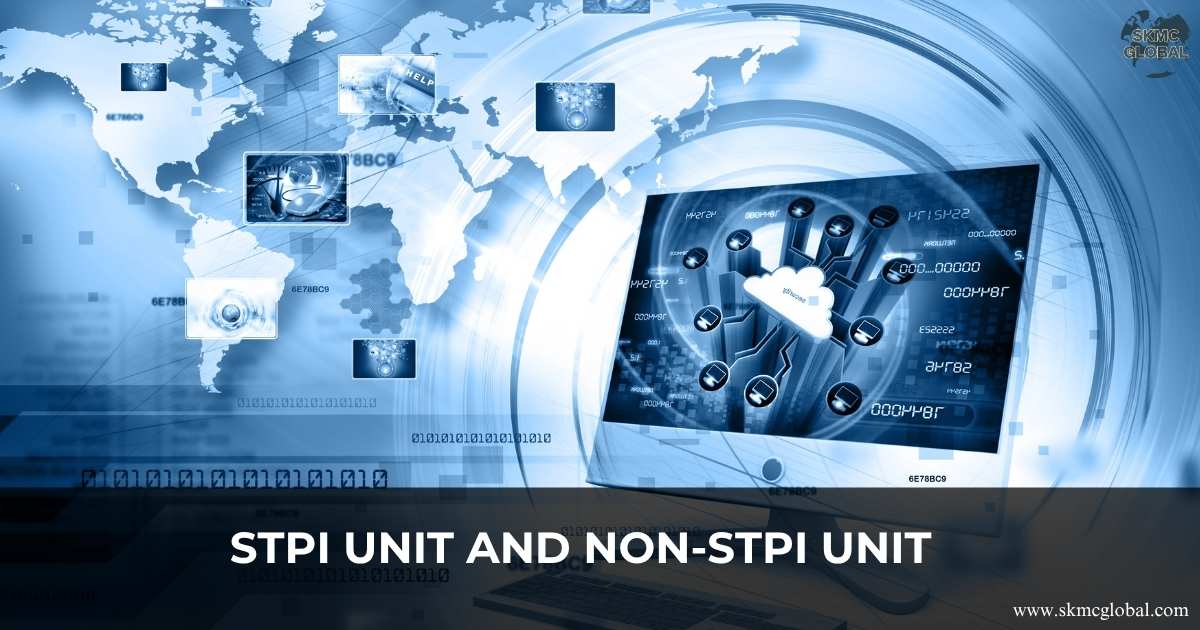 STPI Unit and Non-STPI Unit...
Oct 16,2025
STPI Unit and Non-STPI Unit...
Oct 16,2025
-
 Country-by-Country Reporting (CbCR) and Its Evolvi...
Oct 09,2025
Country-by-Country Reporting (CbCR) and Its Evolvi...
Oct 09,2025
-
 What is Free Trade Agreement and Certificate of Or...
Oct 08,2025
What is Free Trade Agreement and Certificate of Or...
Oct 08,2025
-
 What is the relevance of status holders certificat...
Oct 06,2025
What is the relevance of status holders certificat...
Oct 06,2025
-
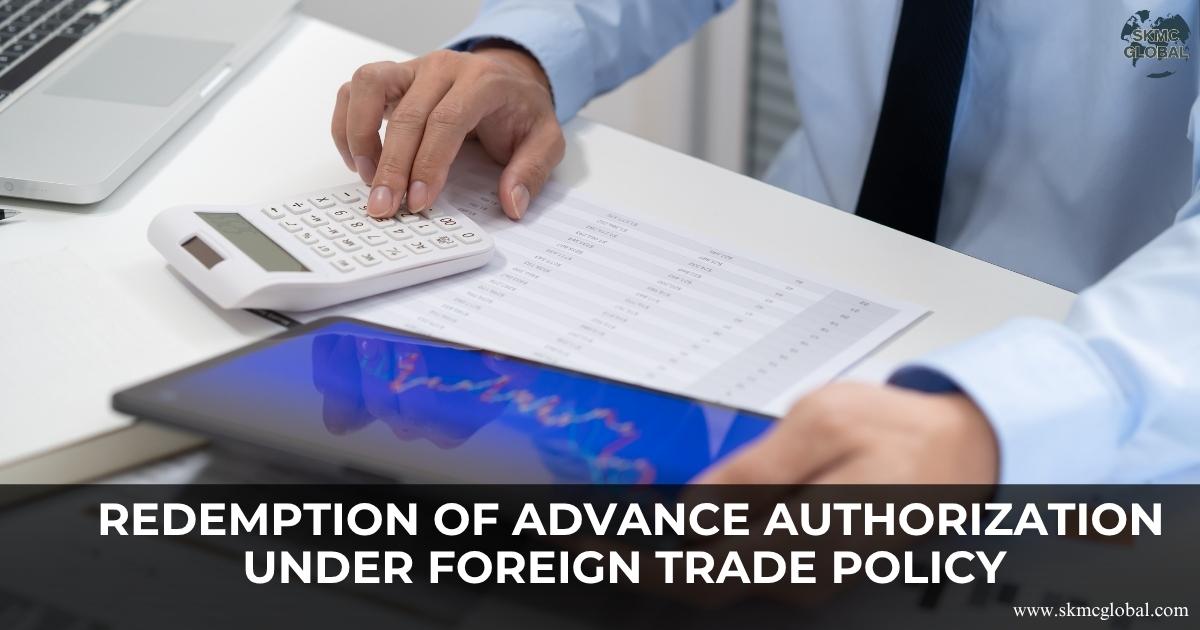 Redemption of Advance Authorization under Foreign ...
Oct 04,2025
Redemption of Advance Authorization under Foreign ...
Oct 04,2025
-
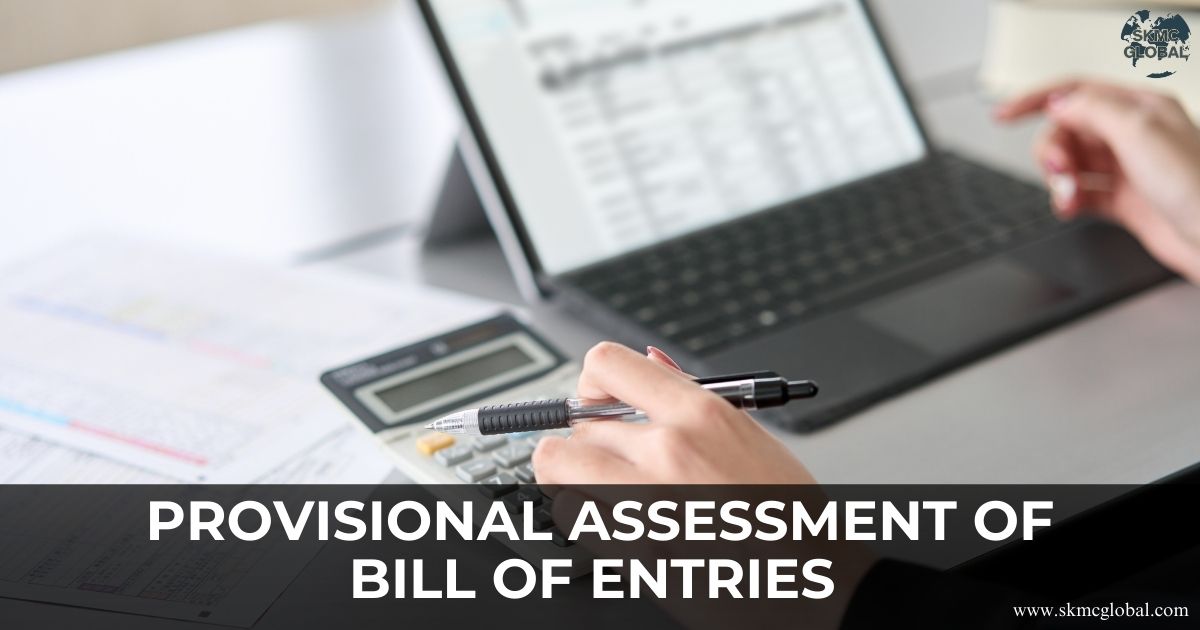 What is provisional assessment of Bill of Entries ...
Sep 29,2025
What is provisional assessment of Bill of Entries ...
Sep 29,2025
-
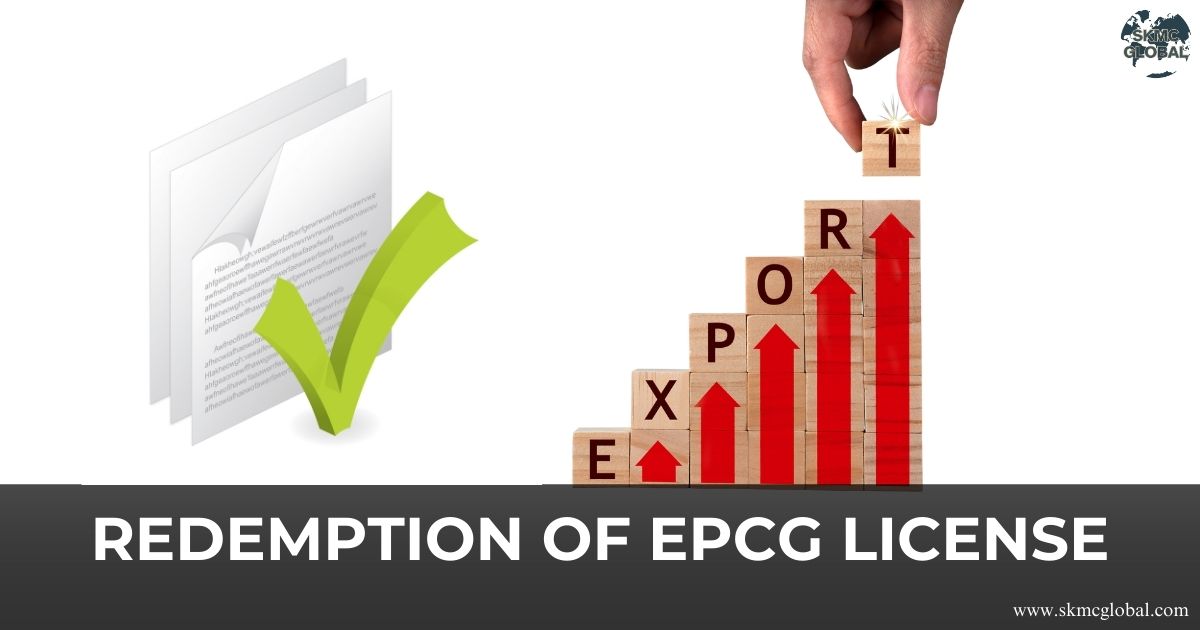 Redemption of EPCG License...
Sep 26,2025
Redemption of EPCG License...
Sep 26,2025
-
 MOOWR (Manufacturing and Other Operations in Wareh...
Sep 24,2025
MOOWR (Manufacturing and Other Operations in Wareh...
Sep 24,2025
-
 Procedure to Apply SCOMET License...
Sep 22,2025
Procedure to Apply SCOMET License...
Sep 22,2025
-
 Landscape of Semiconductor Industry while Doing Bu...
Sep 18,2025
Landscape of Semiconductor Industry while Doing Bu...
Sep 18,2025
-
 The Hidden Costs of In-House Accounting v/s Outsou...
Sep 17,2025
The Hidden Costs of In-House Accounting v/s Outsou...
Sep 17,2025
-
 TDS on sale of immovable property by an nri...
Sep 10,2025
TDS on sale of immovable property by an nri...
Sep 10,2025
-
 Setting up a Project Office in India...
Sep 08,2025
Setting up a Project Office in India...
Sep 08,2025
-
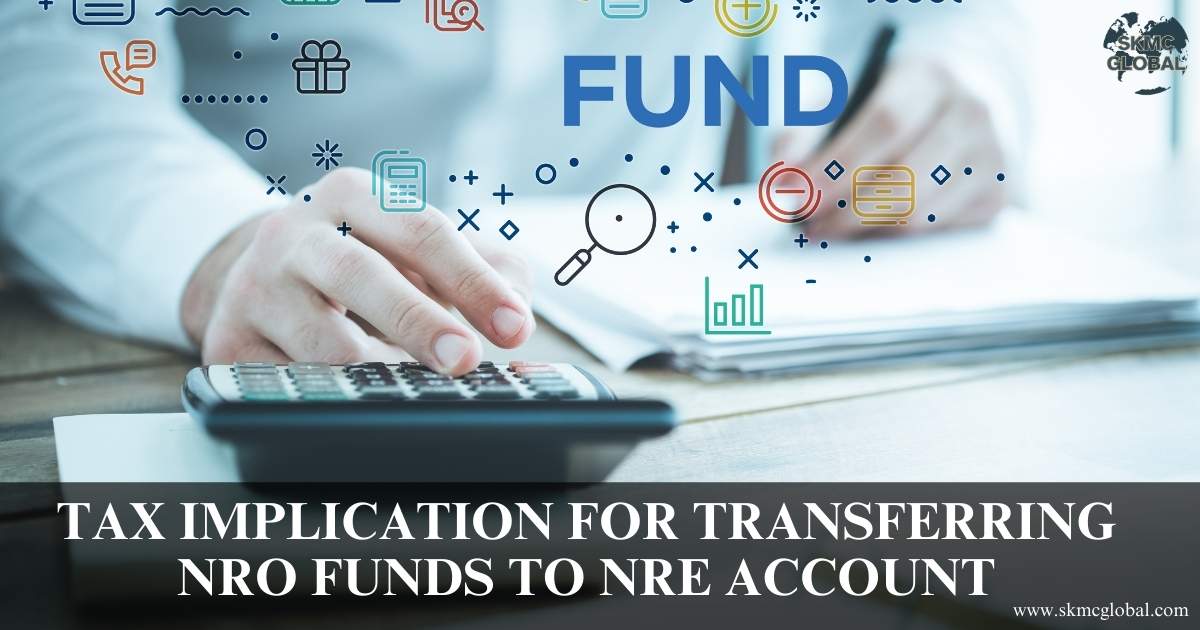 Tax Implication for Transferring NRO Funds to NRE ...
Sep 05,2025
Tax Implication for Transferring NRO Funds to NRE ...
Sep 05,2025
-
 How outsourcing CFO services helps the corporates ...
Aug 27,2025
How outsourcing CFO services helps the corporates ...
Aug 27,2025
-
 Why a Periodical Cash Flow Statement is Necessary ...
Aug 26,2025
Why a Periodical Cash Flow Statement is Necessary ...
Aug 26,2025
-
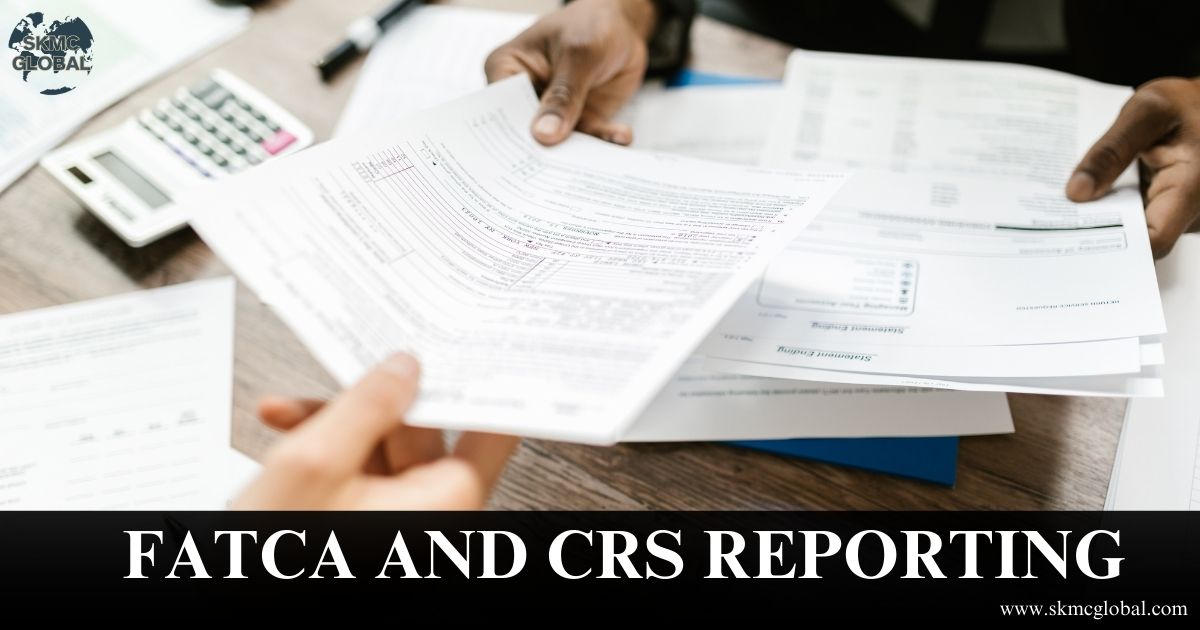 What is FATCA and CRS reporting and its difference...
Aug 22,2025
What is FATCA and CRS reporting and its difference...
Aug 22,2025
-
 What are unclaimed TDS Credits and how to claim it...
Aug 21,2025
What are unclaimed TDS Credits and how to claim it...
Aug 21,2025
-
 Digital Taxation is reshaping Tax Nexus Between Ju...
Aug 20,2025
Digital Taxation is reshaping Tax Nexus Between Ju...
Aug 20,2025
-
 Procedure to Take PF Registration and Its Complian...
Aug 18,2025
Procedure to Take PF Registration and Its Complian...
Aug 18,2025
-
 Procedure to take PSARA License...
Aug 11,2025
Procedure to take PSARA License...
Aug 11,2025
-
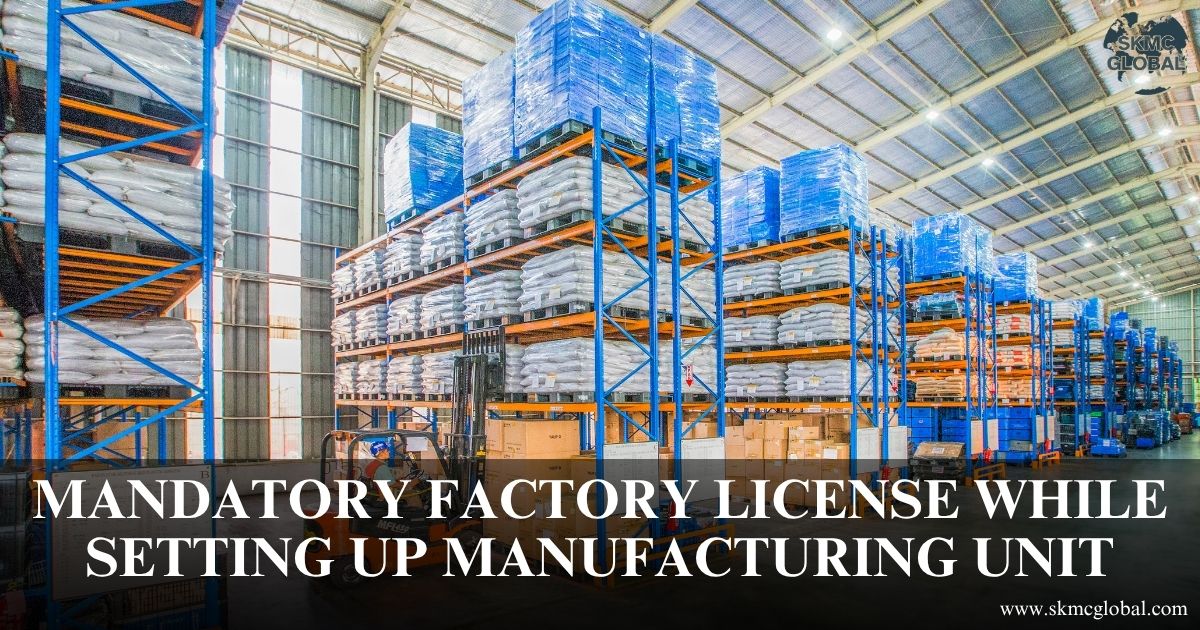 Mandatory factory license while setting up manufac...
Aug 08,2025
Mandatory factory license while setting up manufac...
Aug 08,2025
-
 Procedure for obtaining NBFC Registration in India...
Aug 04,2025
Procedure for obtaining NBFC Registration in India...
Aug 04,2025
-
 FSSAI License registration for Food Business...
Jul 14,2025
FSSAI License registration for Food Business...
Jul 14,2025
-
 How Management Information System (MIS) reporting ...
Jul 11,2025
How Management Information System (MIS) reporting ...
Jul 11,2025
-
 IFRS 9 impairment- A complete guide...
Jul 12,2025
IFRS 9 impairment- A complete guide...
Jul 12,2025
-
 Why most of the companies are shifting to hr and p...
Jul 10,2025
Why most of the companies are shifting to hr and p...
Jul 10,2025
-
 A complete guide on valuation of shares...
Jul 10,2025
A complete guide on valuation of shares...
Jul 10,2025
-
 BIS registration for foreign manufacturer...
Jul 09,2025
BIS registration for foreign manufacturer...
Jul 09,2025
-
 Understanding the Scope of the Shops and Establish...
Jul 08,2025
Understanding the Scope of the Shops and Establish...
Jul 08,2025
-
 Coso framework: Complete guide on internal control...
Jun 26,2025
Coso framework: Complete guide on internal control...
Jun 26,2025
-
 Components and Process for Conducting Internal Aud...
Jun 25,2025
Components and Process for Conducting Internal Aud...
Jun 25,2025
-
 What is ICFR and Why It is Important for Businesse...
Jun 24,2025
What is ICFR and Why It is Important for Businesse...
Jun 24,2025
-
 Understanding WPC Certification and its applicabil...
Jun 23,2025
Understanding WPC Certification and its applicabil...
Jun 23,2025
-
 Procedure to take EPR registration for battery was...
Jun 21,2025
Procedure to take EPR registration for battery was...
Jun 21,2025
-
 3PL Logistics...
Jun 19,2025
3PL Logistics...
Jun 19,2025
-
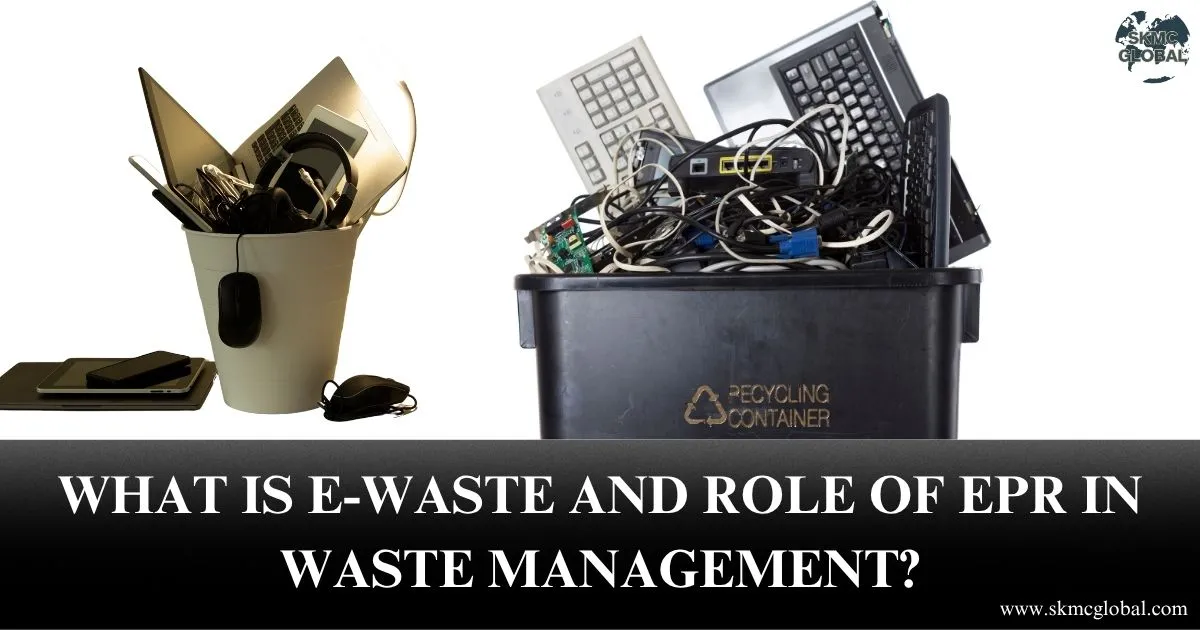 What is E-Waste and role of EPR in Waste Managemen...
Jun 17,2025
What is E-Waste and role of EPR in Waste Managemen...
Jun 17,2025
-
 M&A Due Diligence in India: How to Spot Target Com...
Jun 16,2025
M&A Due Diligence in India: How to Spot Target Com...
Jun 16,2025
-
 BIS crs certification for electronic products...
Jun 12,2025
BIS crs certification for electronic products...
Jun 12,2025
-
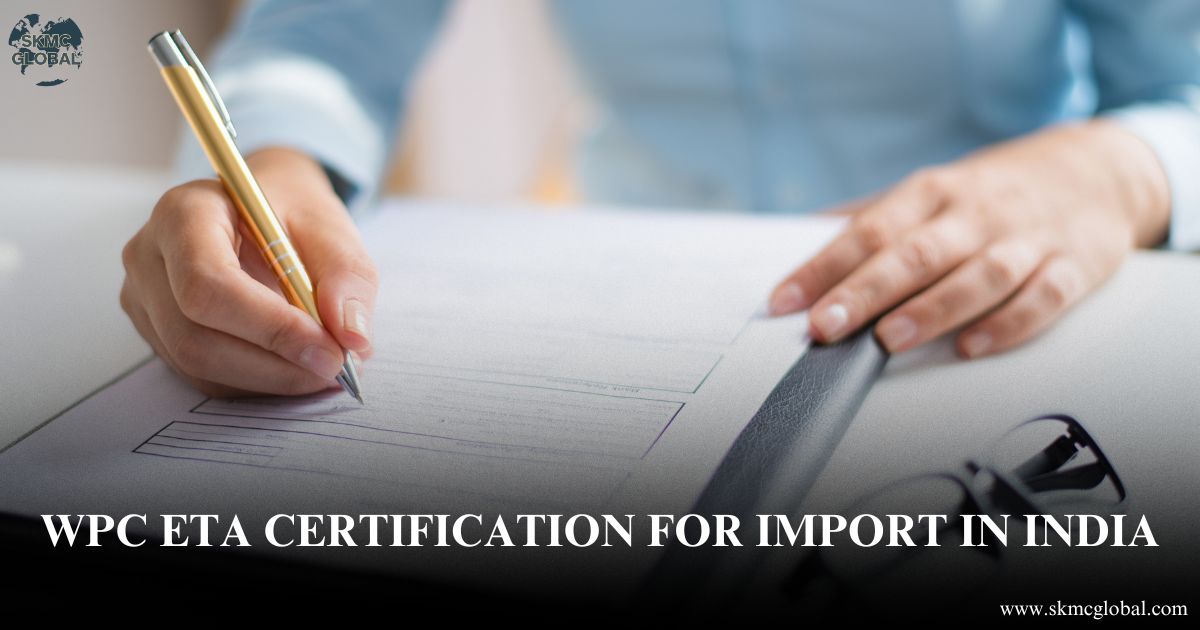 All you need to know about WPC ETA certification f...
Jun 11,2025
All you need to know about WPC ETA certification f...
Jun 11,2025
-
 What is CDSCO Registration under The Drugs & Cosme...
Jun 10,2025
What is CDSCO Registration under The Drugs & Cosme...
Jun 10,2025
-
 Procedure to Take CDSCO Registration in India: A C...
Jun 09,2025
Procedure to Take CDSCO Registration in India: A C...
Jun 09,2025
-
 All You Need to Know About AERB Registration...
Jun 07,2025
All You Need to Know About AERB Registration...
Jun 07,2025
-
 Understanding POSH (Prevention of Sexual Harassmen...
Jun 03,2025
Understanding POSH (Prevention of Sexual Harassmen...
Jun 03,2025
-
 Chartered Accountant's role in financial managemen...
May 23,2025
Chartered Accountant's role in financial managemen...
May 23,2025
-
 5 Things to keep in mind while running your payrol...
May 17,2025
5 Things to keep in mind while running your payrol...
May 17,2025
-
 Why BIS Certification is Crucial for Importers and...
May 15,2025
Why BIS Certification is Crucial for Importers and...
May 15,2025
-
 Top 7 Reasons Indian Entrepreneurs Are Switching t...
May 07,2025
Top 7 Reasons Indian Entrepreneurs Are Switching t...
May 07,2025
-
 Incorporation of Company in Japan...
Apr 24,2025
Incorporation of Company in Japan...
Apr 24,2025
-
 How to set up a Representative Office in Singapore...
Apr 14,2025
How to set up a Representative Office in Singapore...
Apr 14,2025
-
 BIS certificate for medical equipments...
Apr 09,2025
BIS certificate for medical equipments...
Apr 09,2025
-
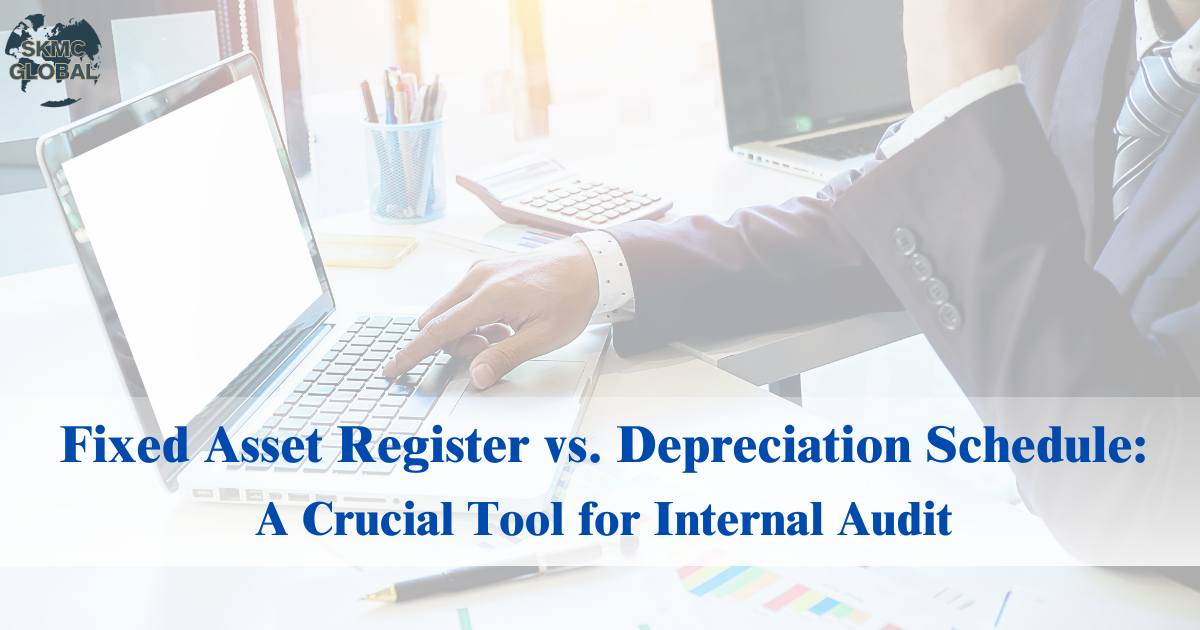 Fixed Asset Register v/s Depreciation Schedule: A ...
Apr 02,2025
Fixed Asset Register v/s Depreciation Schedule: A ...
Apr 02,2025
-
 Role of AI in Accounting...
Mar 26,2025
Role of AI in Accounting...
Mar 26,2025
-
 Capital Structure & its Impact on Profitability...
Feb 21,2025
Capital Structure & its Impact on Profitability...
Feb 21,2025
-
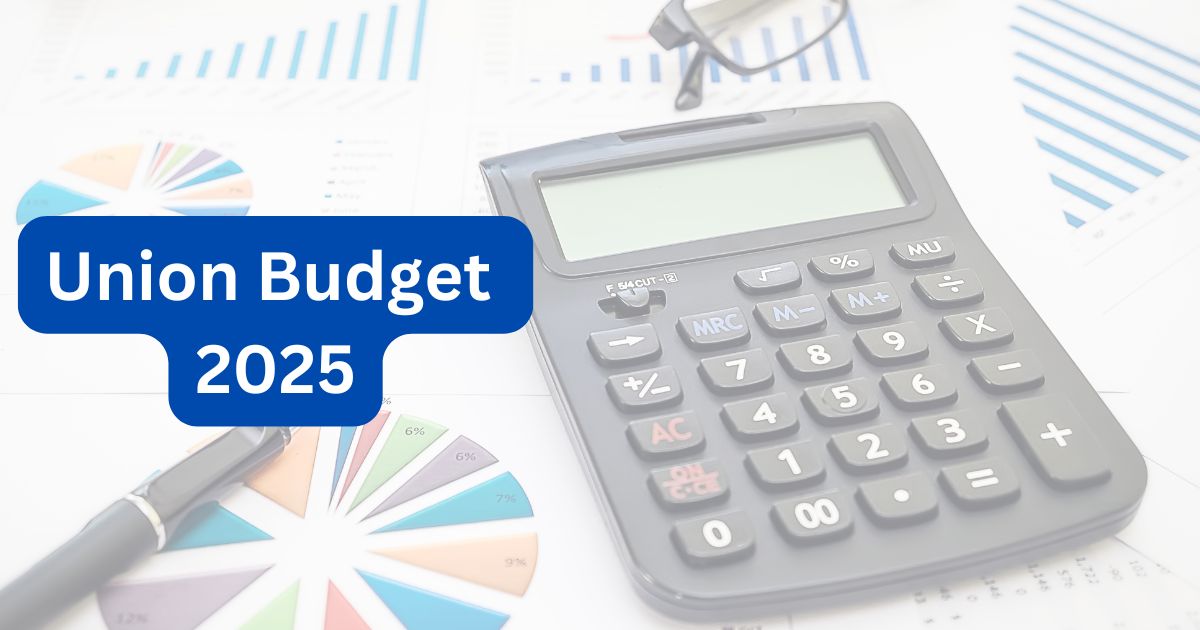 Union Budget 2025...
Feb 01,2025
Union Budget 2025...
Feb 01,2025
-
 What is EPR in Plastic waste Management? ...
Jul 12,2022
What is EPR in Plastic waste Management? ...
Jul 12,2022
-
 Lithium-ion Battery Recycling Plant Setup in India...
May 10,2022
Lithium-ion Battery Recycling Plant Setup in India...
May 10,2022
-
 Setting up E-waste Recycling Plant Setup...
Jan 12,2022
Setting up E-waste Recycling Plant Setup...
Jan 12,2022
-
 Applicability of Labour Laws in India...
Jul 15,2021
Applicability of Labour Laws in India...
Jul 15,2021
-
 Basis to Outsource Finance and Accounting Services...
Oct 31,2021
Basis to Outsource Finance and Accounting Services...
Oct 31,2021
